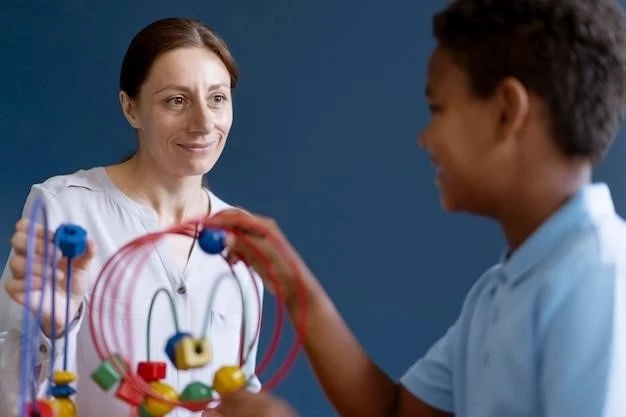Hemifacial Atrophy Agenesis of the Caudate Nucleus
Introduction
Hemifacial atrophy agenesis of the caudate nucleus is a rare disorder characterized by facial asymmetry and progressive muscle wasting. This medical condition affects the craniofacial and neurological systems due to a genetic mutation. Patients may experience a range of symptoms such as facial asymmetry, muscle atrophy, and neurological manifestations. Understanding the symptoms, diagnosis, prognosis, and treatment options for this condition is crucial for managing the impact it has on individuals’ quality of life.
This article aims to provide an in-depth exploration of hemifacial atrophy agenesis of the caudate nucleus, including its symptoms, diagnosis, prognosis, and available treatment options. By shedding light on this rare disorder, we hope to enhance awareness, promote early detection, and encourage ongoing research to improve the lives of those affected by this condition.
Understanding the Condition

Hemifacial atrophy with agenesis of the caudate nucleus is a rare neurological disorder that primarily affects the development of the face and nervous system. The condition is characterized by facial asymmetry, where one side of the face appears underdeveloped or smaller than the other. This asymmetry can lead to significant aesthetic and functional challenges for affected individuals.
Individuals with this condition may also experience muscular atrophy, particularly in the facial muscles, leading to further facial asymmetry and a sunken appearance. The involvement of the caudate nucleus, a part of the brain responsible for motor control and coordination, can manifest as neurological symptoms such as involuntary movements, muscle rigidity, and cognitive impairments.
The underlying cause of hemifacial atrophy with agenesis of the caudate nucleus is a genetic mutation that disrupts normal development in the affected areas. While the exact mechanisms remain under investigation, advancements in genetic research have provided valuable insights into the pathophysiology of this rare disorder.
Symptoms of Hemifacial Atrophy Agenesis
Hemifacial atrophy with agenesis of the caudate nucleus presents a range of symptoms that impact both the physical appearance and neurological function of affected individuals. Common symptoms include⁚
- Facial asymmetry⁚ One side of the face may appear smaller or underdeveloped compared to the other side.
- Muscular atrophy⁚ Progressive wasting of facial muscles can lead to a sunken appearance and functional limitations.
- Neurological manifestations⁚ Involuntary movements, muscle rigidity, and cognitive impairments may arise due to caudate nucleus involvement.
- Craniofacial abnormalities⁚ Distortions in the skull and facial structures can contribute to the overall asymmetry and aesthetic concerns.
- Progressive nature⁚ Symptoms of the condition tend to worsen over time, impacting quality of life and daily functioning.
Early recognition and diagnosis of these symptoms are essential for initiating appropriate medical interventions and support services tailored to the individual needs of patients with hemifacial atrophy agenesis of the caudate nucleus.
Diagnosis and Prognosis
Diagnosing hemifacial atrophy with agenesis of the caudate nucleus involves a comprehensive evaluation of the patient’s medical history, physical examination, and diagnostic tests. Imaging studies such as MRI or CT scans may reveal characteristic abnormalities in the affected facial structures and the caudate nucleus, aiding in the diagnosis.
Genetic testing can identify specific genetic mutations associated with the condition, providing valuable information for both diagnosis and potential family screening. Additionally, neurological assessments and evaluations by craniofacial specialists play a crucial role in confirming the diagnosis and assessing the extent of neurological and craniofacial involvement.
The prognosis for individuals with hemifacial atrophy agenesis of the caudate nucleus varies depending on the severity of symptoms and the presence of associated complications. While there is currently no cure for the condition, management strategies focus on symptom relief, rehabilitation, and supportive care to improve quality of life and functional outcomes.
Close monitoring by a multidisciplinary healthcare team, including neurologists, geneticists, and plastic surgeons, is essential for ongoing management and support. Research into potential therapeutic advancements continues to offer hope for improved outcomes and enhanced understanding of this rare disorder.
Treatment Options
The management of hemifacial atrophy agenesis of the caudate nucleus focuses on addressing the diverse symptoms and challenges faced by individuals with this rare disorder. Treatment options include⁚
- Physical therapy⁚ Targeted exercises can help improve muscle strength, range of motion, and facial symmetry.
- Occupational therapy⁚ Techniques for daily living activities and facial muscle control may enhance functional abilities.
- Plastic surgery⁚ Reconstructive procedures can address facial asymmetry and restore aesthetic balance.
- Medications⁚ Symptom-specific medications may be prescribed to manage neurological symptoms such as tremors or rigidity.
- Speech therapy⁚ For individuals with speech difficulties due to facial muscle weakness or coordination issues.
Comprehensive care plans are tailored to the unique needs of each patient, considering the extent of facial asymmetry, muscular atrophy, and neurological manifestations present. Collaborative efforts between healthcare providers, therapists, and specialists are essential to ensure a holistic approach to treatment and care.
Regular follow-up appointments and evaluations are crucial to monitor treatment progress, adjust interventions as needed, and address any new symptoms or challenges that may arise. By combining medical interventions with supportive therapies, individuals with hemifacial atrophy agenesis of the caudate nucleus can optimize their quality of life and functional outcomes.
Research and Advancements
Ongoing research into hemifacial atrophy with agenesis of the caudate nucleus is crucial for advancing our understanding of this rare disorder and developing improved management strategies. Recent advancements in the field include⁚
- Genetic studies⁚ Identifying novel genetic mutations associated with the condition to enhance diagnostic accuracy and inform potential targeted therapies.
- Neuroimaging techniques⁚ Utilizing advanced imaging technologies to precisely visualize structural abnormalities in the caudate nucleus and affected facial regions.
- Therapeutic trials⁚ Investigating potential drug treatments and surgical interventions aimed at alleviating symptoms and improving outcomes for patients.
- Regenerative medicine⁚ Exploring the use of stem cell therapies and tissue engineering to repair damaged tissues and promote facial muscle regeneration.
Collaboration between researchers, healthcare providers, and patient advocacy groups is essential for driving progress in the understanding and management of hemifacial atrophy agenesis of the caudate nucleus. By sharing knowledge, resources, and expertise, the medical community can work towards improving the lives of individuals affected by this complex and challenging condition.
Continued investment in research, education, and innovation is key to unlocking new treatment modalities, enhancing patient outcomes, and ultimately, offering hope for a brighter future for those living with hemifacial atrophy agenesis of the caudate nucleus.
Conclusion
In conclusion, hemifacial atrophy with agenesis of the caudate nucleus is a rare and complex disorder that presents significant challenges for affected individuals. The combination of facial asymmetry, muscular atrophy, and neurological manifestations requires a multidisciplinary approach to diagnosis, treatment, and ongoing care.
While current management strategies focus on symptom relief, rehabilitation, and supportive therapies, ongoing research and advancements hold promise for future improvements in the understanding and treatment of this condition. Collaborative efforts among healthcare professionals, researchers, and support networks are essential to enhance outcomes and quality of life for patients with hemifacial atrophy agenesis of the caudate nucleus.
By increasing awareness, promoting early detection, and investing in research initiatives, we can strive towards a better future for individuals living with this rare disorder. It is crucial to continue advocating for improved access to resources, innovative therapies, and comprehensive care approaches to ensure that individuals with hemifacial atrophy agenesis of the caudate nucleus receive the support and treatment they need to thrive.
